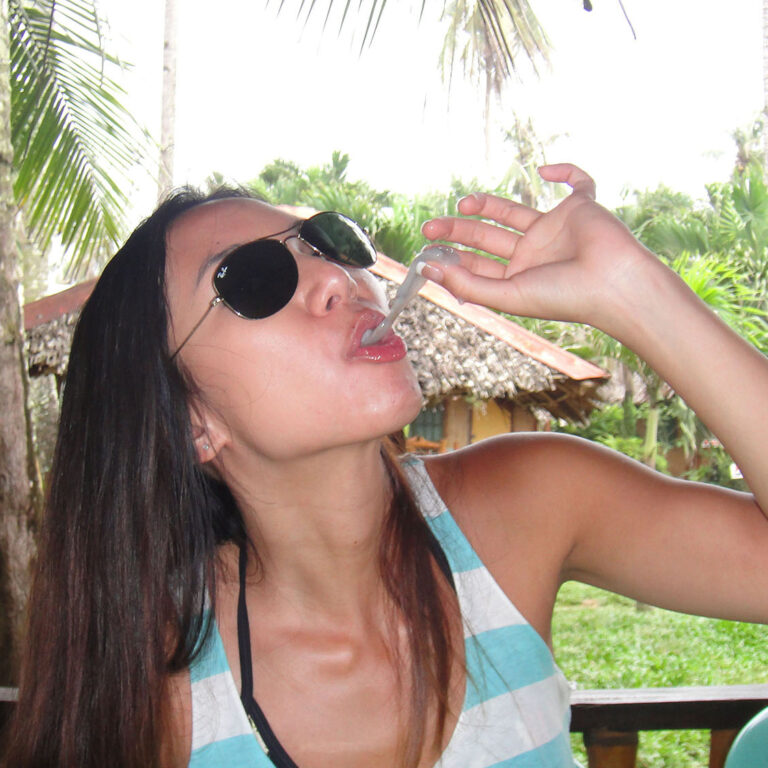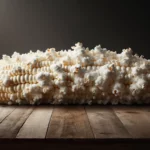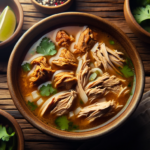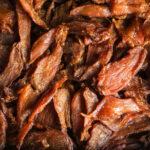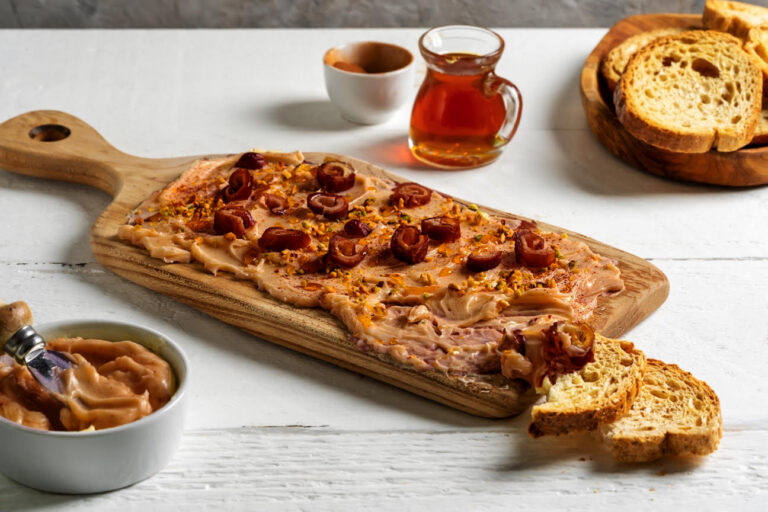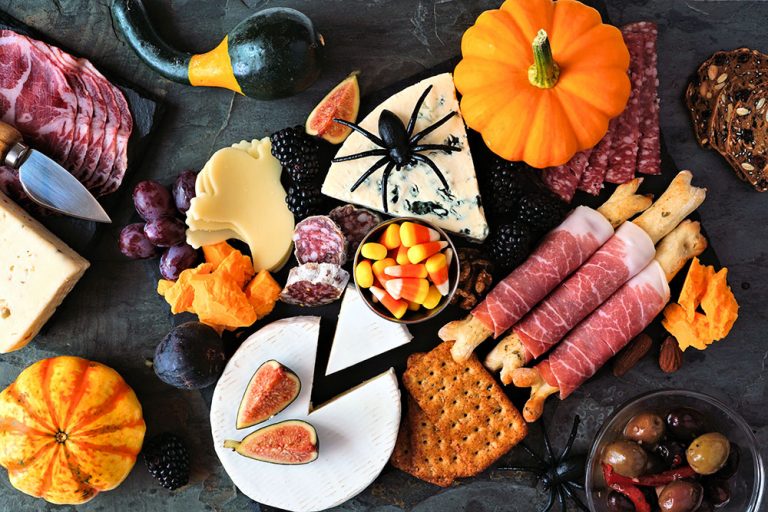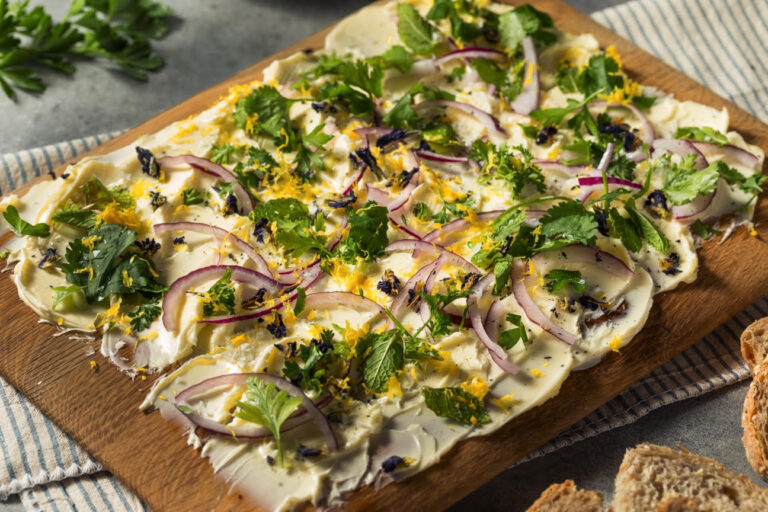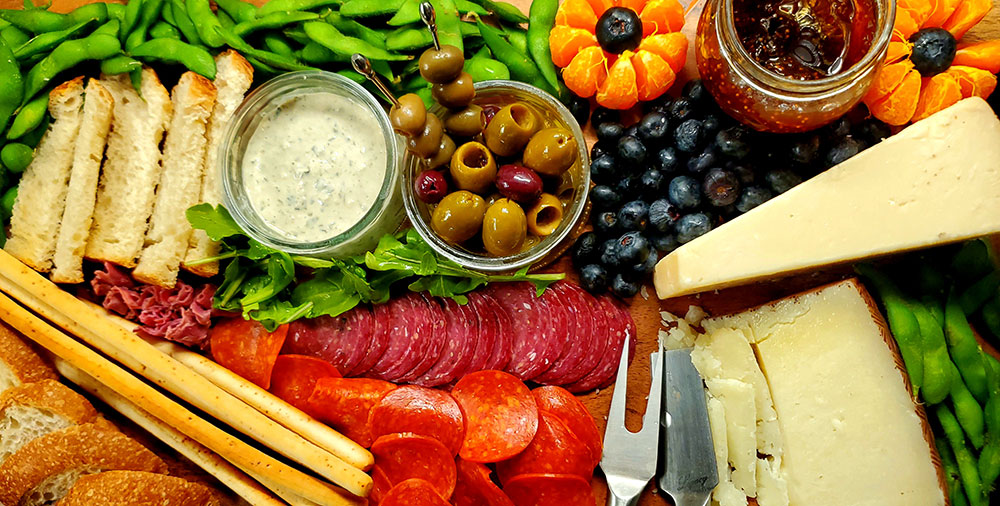
What is charcuterie?
Charcuterie is technically defined as a collection of cold cooked meats, traditionally pork-based. Charcuterie boards (a.k.a. charcuterie platters, charcuterie trays, meat & cheese boards, cheese boards, food boards, grazing boards and tasting boards) are a display of such meats along with other small edible accompaniments.
These boards are often eaten as an appetizer prior to a meal, but can also be treated as a meal in itself. It is different from a platter hors d’oeuvres since the pieces of food are not served assembled. In other words, it’s kinda like a deconstructed tray of hors d’oeuvres.
As charcuterie had gained in popularity since 2018 (according to Google Trends), it has evolved from simply referring to cured meats to an entire display of meats, cheeses, crackers, spreads and much more. Non-traditional “charcuterie” boards that don’t contain the aforementioned foods are more accurately called food boards or grazing boards.
How do your pronounce charcuterie?
Charcuterie is a French word that has been pronounced slightly differently in different countries. In English, it is pronounced shar-KEW-te-ree (not CHAR-KEW-te-ree, shar-KOO-te-ree or shar-KOO-tree). In French it is pronounced SHA-KU-te-ree.
common misspellings
Because charcuterie is not pronounced phonetically (i.e. it’s not pronounced exactly how it is spelled), it’s common to see many misspellings, especially on the internet. Some of these creative misspellings include charcutery, charcutary, charuterry, charcutarry, sharcuterie, sharkcuterie and the o-so-clever…shark coochie board.
What do you put on a charcuterie board?
The “rules” for charcuterie boards (a.k.a. food boards) have become less strict over the years and it’s now generally accepted to put whatever snacks like…as long as it revolves around a common theme. However, if you want to put together a classic charcuterie board, these are the traditional components and some examples of crowd favorites.
- cured sliced meats: pepperoni, salami, ham, prosciutto and sausages
- soft cheeses: brie, camembert, gouda and havarti
- hard cheeses: cheddar, gruyere, manchego and swiss
- bread/crackers: baguette, sourdough, seeded crackers and breadsticks
- dried fruits: dried apricots, dried figs, dried apples and dried pineapples
- fresh fruits: black/red/green grapes, strawberries, apples, raspberries, blackberries and blueberries
- fresh herbs: arugula, basil, dill, parsley and sprigs of rosemary
- nuts: almonds, hazelnuts, macadamia nuts, pecans, pistachio and walnuts
- pickled veggies: gherkins, hot carrots, pickles, pickled slaw, sauerkraut
- seeds: pomegranate seeds, pumpkin seeds, sesame seeds and sunflower seeds
- sweet spreads/dips: jam, jelly, honey, preserves and Nutella
- savory spreads/dips: pate, hummus, spinach & artichoke dip and ranch dressing
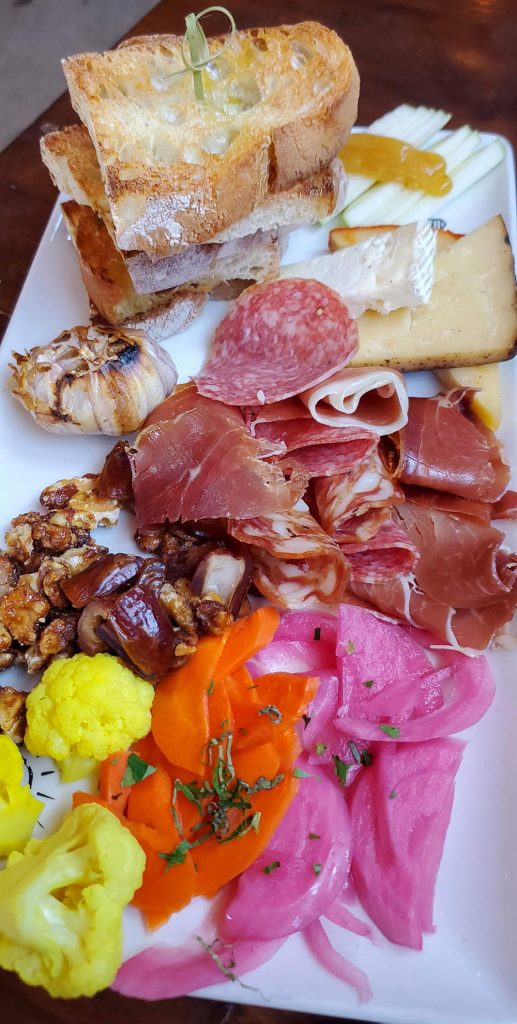
How do you assemble charcuterie?
What you put on a charcuterie board and how you assemble it depends on the size and shape of your board. If your board is on the smaller side, you may want to limit what types of food to add. If your board is larger, or if you’re using multiple boards, you may be inclined to add more variety. Here are some tips and options to make the display of food on your board beautiful.
- for sliced meats: overlap them, fan them out, put them in a pile, or fold/roll & tightly place them either horizontally or vertically on the board (use the cheese, jam, or items to keep them propped up)
- for cheese: unwrap them, cut several thin slices or small cubes and place them together on the board
- create shapes and/or designs: overlap your crackers in a circle around the dip or form curves/wavy lines
- fill in the gaps: try to fill in any open board spaces with food or decor, if possible
- serve with wine: consider opening a bottle of wine with glasses or set up a wine tasting
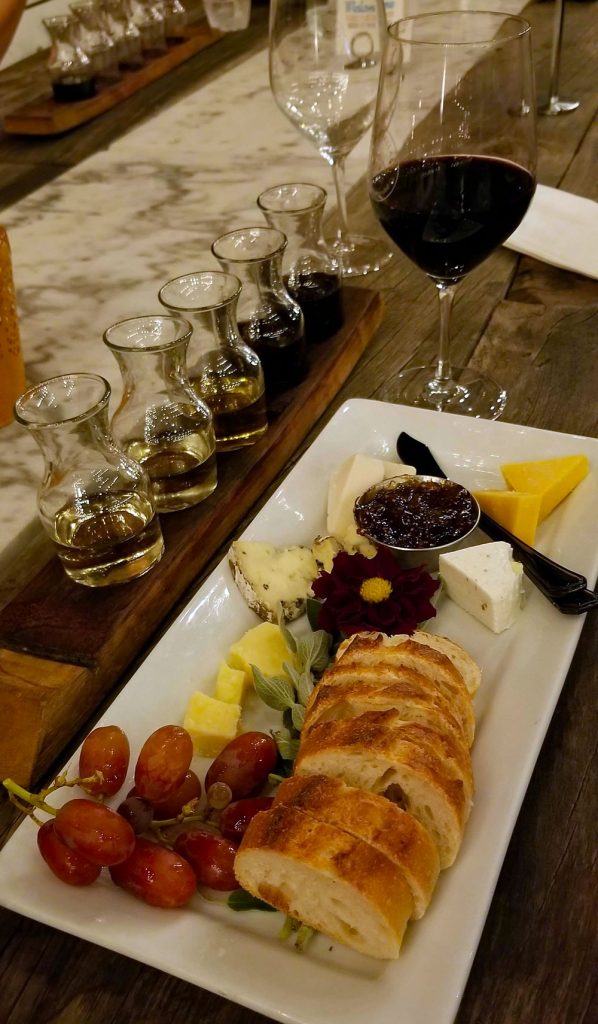
How big should it be?
Of course, the size of your food board and the amount of food you prepare depends on how many people you’re feeding. Once you have a headcount, you’ll want to estimate that for every person in attendance, there should be at least five bites of food. This isn’t an exact science, so you may want to consider preparing multiple boards with extra reserves in the kitchen if you expect to serve a large group and/or don’t plan on serving full meals.
How long in advance can you prepare charcuterie boards?
Yes, you can definitely prepare your food board in advance, but the maximum amount of time you can prepare it prior to serving depends on what foods you are including in your board. Here is a general guideline listing the estimated times of how early some perishable foods can be laid out in advance.
- 3-5 days: meats, cheeses, nuts, seeds, dried fruits, candies, jams, jellies, preserves and spreads
- 1-2 days: fresh fruits, vegetables and herbs
- immediately prior to serving: anything that gets stale, spoils, browns, or melts easily (e.g. crackers, bread, sushi, sour cream, whipped cream, etc.)
Keep in mind that any food prepared in advance should be covered sealed in a container or with plastic wrap to prevent any contamination and stored in a refrigerator whenever necessary.
How do you eat charcuterie?
The great thing about charcuterie is that there is not really one right way to eat it. The most common way is to pick up individual slices/pieces with any utensils provided, or your hands (specifically, your fingertips) if none are provided and put it on your plate. Layer a cracker with meat, cheese and/or spread and at it with your fingertips (or a toothpick or fork, if provided).
That being said, here are some do’s and don’ts:
- Do taste a little bit of everything to find out what you like. Looks and smells can be deceiving.
- Do mix and match different cheeses, meats, spreads and/or other items for different flavor & texture combinations.
- Do share which combinations you like with others. Sharing is caring.
- Don’t touch everything with your hands that you aren’t going to eat. Nobody wants your germs.
- Don’t double-dip your food in any sauces or spreads. Seriously, no one wants your germs.
- Don’t eat everything or all of any one item on the board by yourself. Let others have a taste.
What are the different types of charcuterie boards?
classic charcuterie boards
These classic food boards contain a mix of savory and sweet foods represented by a foundation of sliced meats, cheeses, crackers and jams.
dessert charcuterie boards
Dessert charcuterie boards can contain all of your sweet-tooth desires. If you want to add mochi ice cream or anything frozen, you may want to get a frozen board.
- dessert board – a board filled with cookies, candies, cupcakes, donut holes and other bite-sized sweets
- candy board – a board filled with a wide array of sugary and/or chocolaty candies
- fruit board – a board covered with dried and fresh fruits sliced into bite-sized pieces and sweet dips (e.g. chocolate syrup, caramel syrup, honey, whipped cream, etc.)
- hot cocoa board – a board filled with marshmallows, crushed peppermint candies, chocolate chips, caramel, whipped cream and other hot cocoa toppings
dietary-based charcuterie boards
- gluten-free boards
- low-carb boards
- meat-free boards (e.g. butter boards, cheese boards, fruit boards, etc.)
- seacuterie boards (for pescatarians and seafood lovers)
- vegetarian/vegan boards
cuisine-based charcuterie boards
- American food board – an apple pie, burger, hot dog board
- Chinese food board – a Chinese snack board
- French food board – a classic charcuterie board
- Greek food board – a gyro board
- Italian food board – a classic charcuterie board with Italian meats and cheeses
- Japanese food board – a Japanese snack, mochi, or sushi charcuterie board (bonus points for oshizushi ;))
- Mexican food board – a churro, taco or nacho charcuterie board
seasonal & holiday charcuterie boards
- New Year’s food board (celebrated on New Year’s Eve on December 31)
- Super Bowl food board (celebrated in early February)
- Valentine’s Day food board (celebrated on February 14)
- St. Patrick’s Day food board (celebrated on March 17)
- Easter food board (celebrated in March/April)
- Mother’s Day food board (celebrated the 2nd Sunday of May)
- Father’s Day food board (celebrated the 3rd Sunday of June)
- 4th of July food board (celebrated on July 4)
- Halloween food board (celebrated on October 31)
- Thanksgiving food board (celebrated on the 4th Thursday of November)
- Christmas food board (celebrated on Christmas Eve on December 24 or Christmas day on December 25)

other charcuterie themes
- charcuterie chalet/charcuterie chateau – a charcuterie version of a gingerbread house, usually with an edible representation of the surrounding scenery (e.g. rosemary sprigs for trees)
- birthday dessert board – a dessert board with candles /edible sprinkles/edible glitter (note: it is always a good idea to include the birthday celebrant’s favorite snacks)
- movie night board – butter popcorn, caramel popcorn, cheese popcorn, candies, and other theater treats
- butter board – a board covered in a layer of butter (either a single flavor or multiple flavors) with edible flowers, herbs and other eye-catching decor; this became a viral sensation on social media in 2022
What are good boards for charcuterie?
There are seemingly infinite boards, trays and platters that you can use as a charcuterie board. Want to know what can you use in place of a charcuterie board? Pretty much any surface can be used to display your food as long as it is:
- food safe – it should not contain lead or any materials that are not safe for contact with food
- clean – it should be fully cleaned without toxic chemicals and should not leave any sort of dust or residue on the food…no one wants to eat dirty food
- non-porous – moisture should not seep into the board, which can cause stains, molding and/or warping
- sturdy – if it needs to be lifted, the board should easily handle the weight of the food
- appropriately sized – the board should match the amount of food being served; the food should not be falling off the edges of the board, nor should there be too much empty space around or between the food
Best Materials for Charcuterie Boards
- wood – this is the most commonly used material for charcuterie boards as it is easy to maintain, provides a classic presentation and is anti-microbial (when properly treated)
- stone – this is sometimes used as a unique way to present food and can provide a nice light/dark contrast depending on the color of food and the stone
- metal – this can provide a more modern look; sheet metal can be customized into any shape
- mirror/clear glass – these are most commonly seen at buffets and clear glass can be used if you want to show off a table; both are susceptible to cracks
- ceramic – this provides a clean, classic plate feel, but is susceptible to cracks
- plastic – this should only be used for convenience (if nothing else is available) and price (it is cheap, disposable and susceptible to cracks); best suited for very casual outdoor events
- paper – if you have no access to any rigid boards, parchment paper or butcher paper can be placed on any hard flat surface that you want to convert into a food board (e.g. a kitchen counter, dining table, coffee table, etc.)
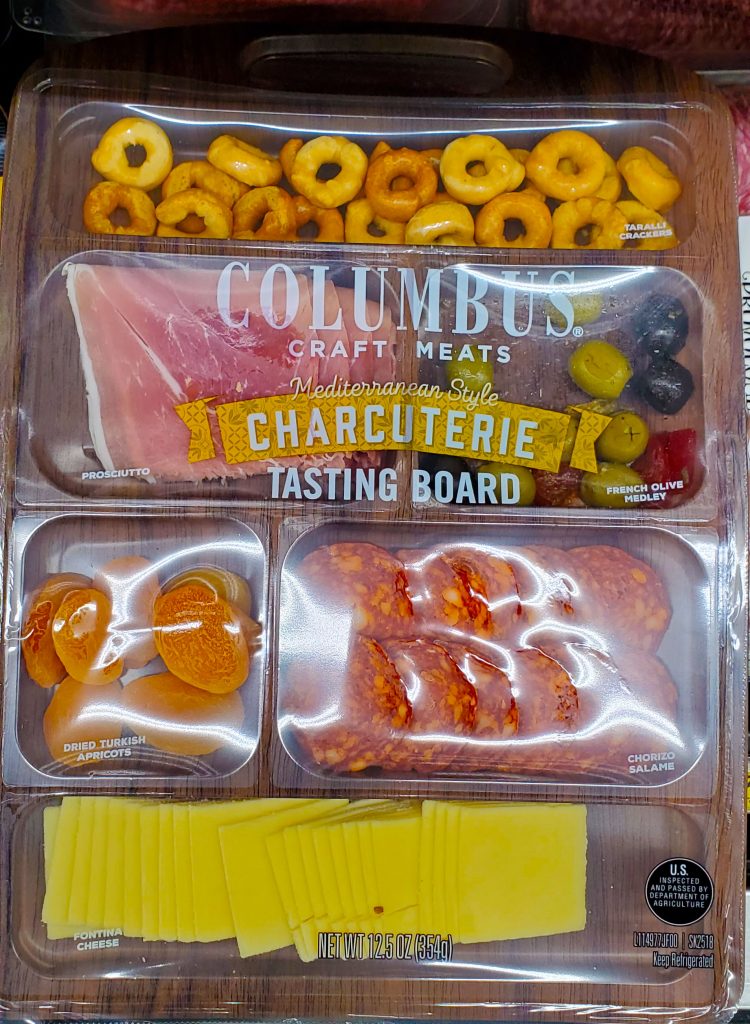
Best Types of Wood for Charcuterie Boards
Wood is hands down the most popular material used for food boards. Keep in mind that it must be non-toxic so it doesn’t contaminate your food. It must also be treated & sealed to become non-porous. The best quality species of wood to get for your boards are:
- maple
- walnut
- oak
- cherry
- olive
- acacia
- teak
- bamboo
Best Types of Stone for Charcuterie Boards
Stone, although not nearly as popular as wood, is also a great material for food boards. Here are some of the best quality types of stone to display your food:
- marble
- granite
- quartz
- slate
- agate
In the end, there are no hard rules to making and enjoying charcuterie. These boards are a blank canvas to flex your imagination and creativity. Experiment with all kinds of foods, colors and combinations, but most importantly, have fun!

